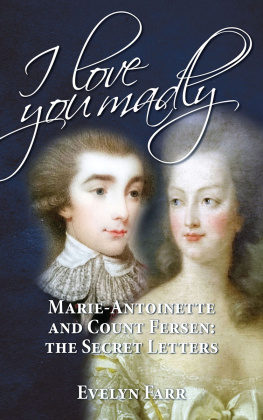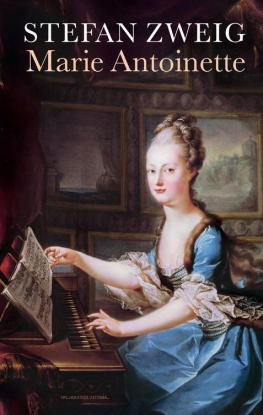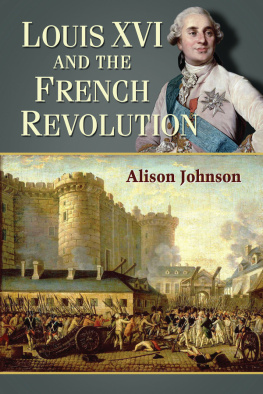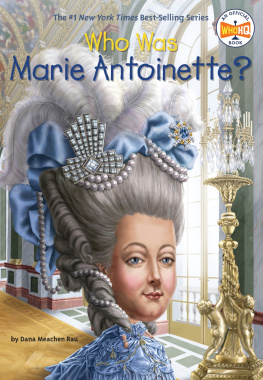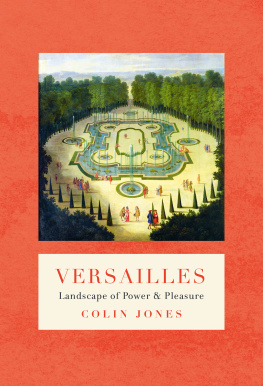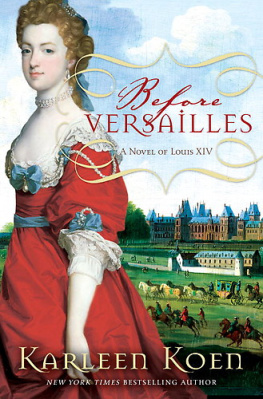
L IST OF I LLUSTRATIONS
A CKNOWLEDGEMENTS
This book has taken several years of research across a number of European countries. None of this would have been possible without the help and advice of many people in each, and I am very grateful to all of them.
In France, Henri-Franois de Breteuil first opened his ancestors archives to me when I was a PhD student in 1985, and ever since he and his wife Sverine have been a source of help, encouragement and advice. Mme Laure de Breteuil has also been very helpful to my work. The marquis de Gontaut-Biron, a descendant of Breteuil through the latters granddaughter, kindly allowed me to consult Breteuils previously unused financial papers in his possession. I am also grateful to Susan Wharton, Director in the Department of Printed Books and Manuscripts at Sothebys, and Bruno Galland, Conservateur en chef of the Section Ancienne of the Archives Nationales, Paris, for bringing their handwriting expertise to some important and controversial documents, presented in the Appendix.
In Austria, Graf and Grfin Heinrich von Clam-Martinic generously permitted me access to the Bombelles papers, and gave me much help in examining them. I am also very grateful to Count Jan dAnsembourg for putting me in touch with the Clam-Martinic family. At the Haus-Hof-und-Staatsarchiv in Vienna, Hofrat Auer and especially Dr Michael Hochedlinger made my research much easier than it would otherwise have been. Magister Gnther Jedliczka of the Austrian Academic Exchange Service was of great help in finding me accommodation through the University of Vienna on several of my stays. Christopher Wentworth-Stanley was most hospitable, and also introduced me to Vienna a major and permanent service.
In Stockholm, Bo Runmark kindly shared the results of his research into Breteuils period in Sweden, and took me on a tour of the former French embassy, the Palais Bt on Blasieholmen. More generally, my trip to Sweden would not have been possible without the Vetenskapsstaden International Centre for Researchers and the excellent and affordable accommodation it provided.
The research for and writing of the book benefited greatly from the award of a Leverhulme Research Fellowship for the year 19992000. I am very grateful to the Leverhulme Trust for this, and also to the British Academy for a Small Personal Grant, which I received in 1995.
I owe a considerable debt of gratitude to my friend and agent Andrew Lownie for all his help and advice with the book over several years. At Macmillan, I also owe much to Becky Lindsey, Catherine Whitaker and Jeremy Trevathan, whose editing has improved it considerably. Stanley Price also read the manuscript and made many helpful suggestions.
The book has also benefited from the advice and comments of several historians, especially John Hardman, Tim Blanning, William Doyle, Philip Mansel, Julian Swann and Jeremy Black. Non-historian friends have also provided important and much-appreciated help. Bnot and Sin Andrieux loaned me a car at a crucial stage of my researches in France. Adela Gooch helped to find the way to Lvstad and Fersens tomb. Finally, Simon Cox nobly came out to Burg Clam with a digital camera and photographed the Bombelles papers, thus solving the problem of how best to consult them. As a result, I finally gained access to Breteuils thoughts and plans in the unlikely setting of a CD-ROM.
I NTRODUCTION
T HE F RENCH R EVOLUTION was a protean and immensely complex phenomenon. At the centre of the storm stood Louis XVI and Marie Antoinette; their response to events as they unfolded determined not only their own destiny, but that of the Revolution itself. An enormous amount has been written about the king and queen, and especially their terrible fate. Yet their actual policy during the Revolution whether they were ever prepared to compromise with their opponents, or simply aimed to restore the old regime is still shrouded in mystery. As a result, a significant gap remains in our understanding of an event that shaped the modern world. The picture of Louis and Marie Antoinette in these years is still very much what it was over a century ago, when the available sources were surveyed by the eminent German historian Max Lenz. Writing in 1894, Lenz lamented the fact that so many had disappeared, but expressed the hope that this might one day be remedied:
Although the memoirs of contemporaries, all of whom have an axe to grind, are often untrustworthy, we must be glad that... a burning desire has now arisen to track down the most important sources. It is also my hope that the original material concerning our subject has not yet all been exhausted. It is possible that a few letters may be missing from the most valuable archive, the Fersen collection, and that they are still preserved, perhaps in code. And dare we not also hope that the papers of other intimates of the Tuileries, of Breteuil, Bouill, and dAgoult, Bishop of Pamiers, may one day see the light of day? No one stood closer to the French royal couple than Breteuil, the last prime minister of the old regime. In exile he served Louis XVI, not without personal ambition, but at the same time with great devotion, and I have no doubt that his memory, which has often been blackened, would be greatly enhanced if his correspondence, with all its importance both for France and
The aim of this book is to continue the work begun by Max Lenz. The major obstacle to this has always been the paucity of clues left by Louis XVI and Marie Antoinette themselves as to their true policy during the Revolution. This was largely a product of necessity. From the moment they were forcibly taken by the crowd from Versailles back to the capital in October 1789, the royal couple were effectively prisoners of the people of Paris. For their own safety, while publicly endorsing the acts of the revolutionary National Assembly, they had to keep their real views and aims as carefully hidden as possible. Despite the obvious dangers, from the summer of 1790 they embarked on a secret counter-revolutionary diplomacy aimed at restoring as much of the royal authority as possible. They burned much of this correspondence, however, on the eve of the storming of the Tuileries and the final overthrow of the monarchy on 10 August 1792.
In any case, Louis XVI himself wrote very little during the Revolution. Possibly this was because he was afflicted with intermittent clinical depression after 1789 certainly contemporary descriptions of his state of mind tally with this diagnosis. As a result, most of the royal familys secret correspondence with their confidants and fellow European monarchs was undertaken by Marie Antoinette. Because the greatest part of this was with her two brothers, the Emperors Joseph II and Leopold II of Austria and their advisers, many of her letters survive in the State Archives in Vienna and have been published. Yet in this correspondence the queen was mostly concerned with the practical details of day-to-day diplomacy; only very rarely did she reveal a glimpse of the actual political system she and her husband wished to see emerge from the revolutionary maelstrom.
As Max Lenz stressed, in the absence of detailed memoranda from the king and queen, the only hope of properly reconstructing their secret policy lies in the papers of the tiny band of committed royalists who helped them, often at great personal risk, to pursue it. One of them, the Swedish Count Hans Axel von Fersen, has become famous because he was perhaps Marie Antoinettes lover as well as her political confidant. Fersen left substantial papers, which are now in the Swedish State Archives in Stockholm. Many of these were published by one of his descendants, baron von Klinckowstrm, in the 1870s; along with Louis XVIs few post-1789 writings and Marie Antoinettes letters, these are an essential source for the king and queens policy during the Revolution. Yet they contain many gaps. All of Fersens diary for the years up to 1791 has been lost, and Fersen himself burned many of his most secret papers in Brussels in November 1792 to prevent them from falling into the hands of the advancing French armies. A century later, Klinckowstrm destroyed those parts of his ancestors correspondence with Marie Antoinette that he felt might harm their reputations, so we shall probably never be able to reconstruct the true nature of the couples relationship.
Next page

